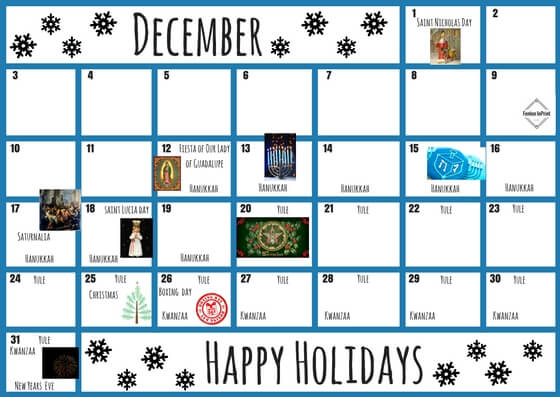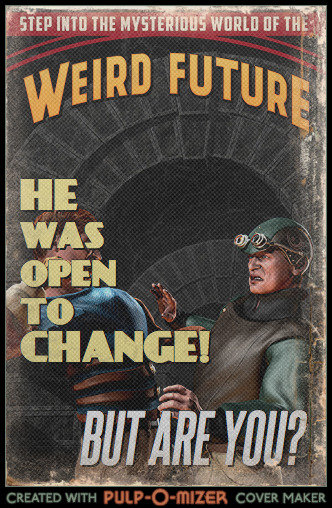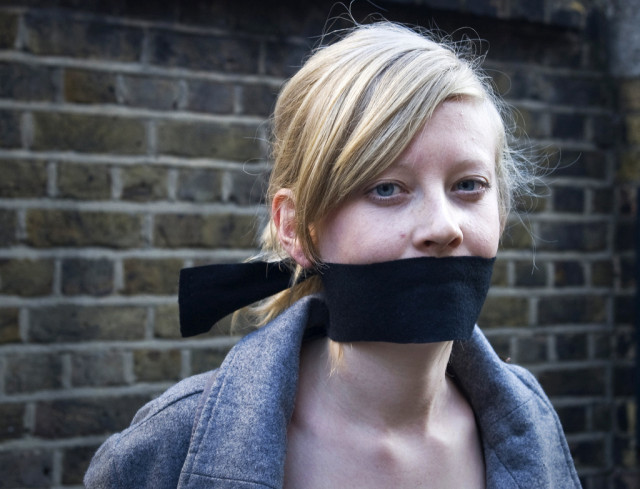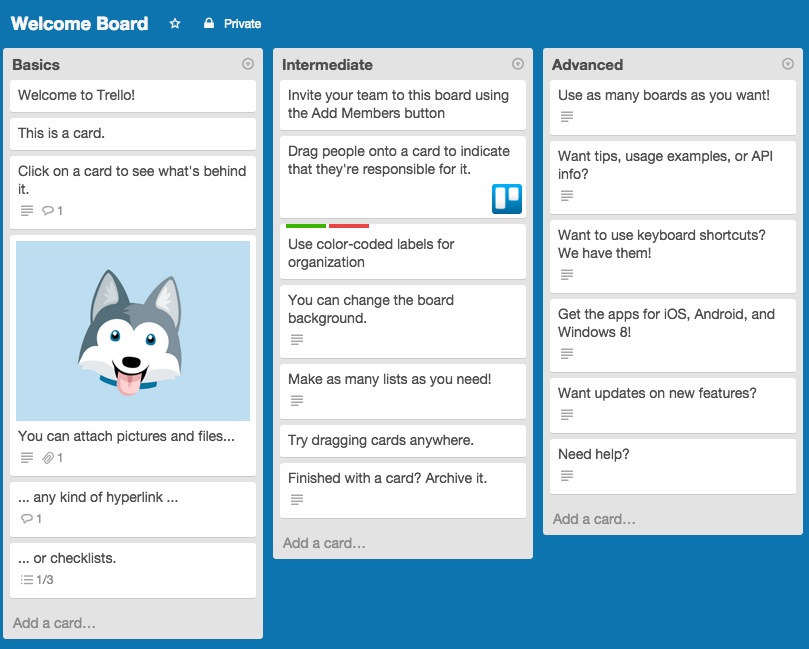Blog
"I realized this morning that your event content is the only event-related 'stuff' I still read. I think that's because it's not about events, but about the coming together of people to exchange ideas and learn from one another and that's valuable information for anyone." — Traci Browne
Welcome to the Conferences That Work blog!
You're in the right place for the latest posts on conference design, facilitation, peer conferences, associations, consulting, and stories like being trapped in an elevator with a Novel Prize winner.
Or sign up for a subscription to my blog posts or RSS feed so you never miss another post.
You can always be open to change
Toward the end of my participative techniques workshop at RCMA EMERGE 2015, I ran a plus/delta evaluation of the entire workshop. Here, as best as I can reconstruct it, is one man’s feedback:
“I’m 83 years old and have been managing our events for 59 years. I reckon I have a couple more years left before I retire. My community’s events are stale; we’re not getting the kind of engagement we used to. This workshop has opened my eyes to simple and effective ways to improve our events. I’ve experienced some really good techniques here and we’re going to change some things we do.”
Wow! I hope I can stay as open when I’m 83 and for the rest of my life.
I hope you can stay open to change too.
We can talk about it
We can’t talk about how we could do things better around here
We can’t talk about what isn’t working
We can’t talk about the countless opportunities we ignore
We can’t talk about what hurts
We can’t talk about dignity
We can’t talk about how to make magic happen
We can’t talk to our boss, our employees, our board, our investors
We can’t talk about the things we can’t talk aboutThat’s a shame.
—Seth Godin, We can’t talk about it
One of the reasons we feel we can’t talk about things is that we are scared about who might hear. Maybe people who have, or might have, power or influence of some kind over us, like our boss (“You’re fired!“) or colleagues (“He’s weird!”)
Even if we’re at a meeting where none of these people are present, we’re unlikely to say certain things if we’re worried that, somehow, what we say gets back to these people.
Confidentiality
This is why one of the ground rules I ask everyone to agree to at the start of my conferences is about confidentiality:
“What we discuss at this conference will remain confidential. What we share here, stays here.”
I explain that you can still talk about what happened in general terms. (“Most participants thought that implementing the new regulations would lead to increased airline security.”) But not in a way that directly implicates an individual. (“John Smith said that the new regulations were just security theatre.”)
In the twenty-two years since I introduced this ground rule, no one has ever refused to abide by it. And, to my knowledge, no one has ever breached this form of confidentiality.
There’s no ultimate guarantee, of course, that everyone will always honor this agreement. When we share something intimate, at that moment we are trusting those around us. Each person has to decide whether they are prepared to take a risk. Sometimes they will remain quiet. But my observations over the years have led me to believe that this ground rule makes the environment safer for many attendees. The consequence? Some of them will share important sensitive things that would otherwise remain unsaid.
We can talk about it if we feel safe enough. Explaining and obtaining agreement on a confidentiality ground rule can take a minute at the start of an event. In my experience, it’s time well spent.
Photo attribution: Flickr user lewishamdreamer
Mom killed that idea: One way that kids are smarter than adults—and the implications for events
 Mom killed that idea
Mom killed that idea
In his fascinating and thought-provoking book The Educated Mind, professor of education Kieran Egan tells the story of kids at a lemonade stand where a customer jokingly asked if they had any beer or scotch. The five-year-old proprietor went into the house and asked Mom “whether he could have some beer and scotch for the stand. He emerged a minute or so later, shrugged, and told his siblings, ‘Mom killed that idea.'” His three and four-year-old siblings had no difficulty interpreting this sentence.
The importance of metaphor in learning
Egan emphasizes the important role of metaphor in learning. Studies have shown that very young children are capable of “prodigal production” of metaphors. Such metaphorical capacity declines as children become older. “Younger children’s production and grasp of metaphor are commonly superior to that of older children and adults.”
Young children’s effortless invention of wonderful words to describe objects in their lives amuses us. My grandchildren’s lovely constructions passerports (passports) and glovins (gloves) come to mind. These are delightful reflections of their minds’ ability to conjure up melanges of ideas and words that express their reality.
We often assume that we get smarter as we get older. By “smarter,” I mean our abilities are superior, and the likelihood we’ll use them is higher. While this is true in many respects, our demonstrated decline in metaphorical capacity means that we are less likely and less able to use metaphors as adults.
The lack of metaphor in education
This is a loss for event education, as metaphor is one of the most powerful methods for extending learning. The philosopher Max Black said, “It would be more illuminating…to say that metaphor creates the similarity than to say it formulates some similarity antecedently existing.” Metaphor then, Egan says, “becomes a key tool in aiding flexible, productive learning”. It “helps us to acquire knowledge about new domains, and also has the effect of restructuring our organization of knowledge.”
So, how do I describe my recent experience of trying to get internet service restored at my home? By comparing it to being stuck on an airplane for days waiting for it to take off without any announcements about what’s going on or when we might leave (if ever). Similarly, my mentor Jerry Weinberg published a book about writing employing a single metaphor—building a fieldstone wall—to illustrate every stage of the process. Both examples illustrate our harnessing a metaphoric plow to prepare the ground for seeds of learning [oops, I did it again.]
Further, I wish more attention had been paid to metaphoric fluency in my early education. As a result, I find it hard to summon up useful metaphors for ideas I’m trying to convey. For this, we can perhaps blame Plato and his successors, who insisted that the “poetic” be eliminated from intellectual inquiry. Consequently, literacy education discourages our use of metaphors.
Some people seem to have a natural ability to dream up apt metaphors. They are usually engaging and memorable presenters (great comedians frequently share this gift too.) Martin Luther King’s “I Have a Dream” and Reagan’s “Break down this wall” speeches obtain great power from metaphor.
Metaphor and event design
How does all this relate to event design? Two examples. Eric de Groot & Mike van der Vijver‘s techniques for formulating meeting objectives and their Elementary Meetings model rely on the power of metaphor to create stakeholder buy-in for meeting objectives and design. Also, good production designers know the importance of choosing event themes that connect at a metaphorical level with underlying goals for the associated meeting.
In conclusion, I believe it’s worth cultivating our skill at employing metaphors or seeking out those who are good at it. So let’s not have to say “Mom killed that idea!” Better events may well be the result.
Photo attribution: Flickr user adwriter
Parallels between the evolution of journalism and events
There are fascinating parallels in the ways that journalism and events are evolving. Listen to the first minute of this interview of “journalism maverick” Jeff Jarvis by David Weinberger.
Here’s the relevant quote:
“What the internet changes is our relationship with the public we serve…What is the proper relationship for journalists to the public? We tend to think it’s manufacturing a product called content you should honor and buy…That’s a legacy of mass media; treating everybody the same because we had to…So we now see the opportunity to serve people’s individual needs. So that’s what made me think that journalism, properly conceived is a service.”
In parallel fashion, events are moving away from broadcast formats that treat everybody the same and evolving towards designs that allow individual participants to learn what they individually want and need to learn, as well as connect with peers and peer communities that have real value for them.
Seeing your conference as a service that can provide what people want—rather than what you’ve decided they want, like the journalists of old—is key to keeping your events relevant, competitive, and successful.
[The rest of the interview is well worth the listen; David Weinberger always asks good questions! Jeff’s book Geeks Bearing Gifts: Imagining New Futures for News looks like a good read too.]
My favorite to-do list manager
My favorite to-do list manager
I’ve lost count of the number of to-do list managers I’ve tried over the years. There have been so many. Most recently, Omnifocus and Wunderlist were my repositories, but I eventually grew frustrated enough to dump them; nothing I’ve used has eliminated the time-honored alternative of writing notes on scraps of paper that get scattered around my desk.
Until now.
I have been using Trello for the last six months, and I’m very happy with it. [Update in 2021: Six years later, it’s still my favorite to-do list manager!]
Here’s what I like about this nifty piece of software.
- It runs on my desktops and mobile devices, syncing seamlessly between platforms. I can update my to-do lists anywhere. (Trello runs on Chrome, Safari, Firefox, Internet Explorer, iOS 7+, Android 4+, and, should the spirit move you, your Kindle Fire HD – 2nd Gen.)
- It works flawlessly. (Wunderlist, I’m looking at you. I shouldn’t need to frantically email tech support when all my lists vanish. Yes, you did restore them for me which is very nice for a free service but…)
- Trello can handle much more than to-do lists. I keep all my to-do’s on one Trello “board”, but you can easily create additional boards for projects that have more than a few associated tasks if that works better for you. (Or you could color code a project’s items so they stand out on your main to-do board. Or you could tag them. Or…)
- It’s very flexible without being over-complex (Omnifocus, I’m talking about you.) I use a combination of Getting Things Done and Kanban methodologies, and Trello makes it a snap to extend the core Kanban model (To Do, Doing, Done) in any way you like. Each Trello board can have any number of Lists, and each list can hold any number of Cards, which are your basic individual action items. For an example look at my to-do board above, which includes a set of three priority lists (cool, warm hot), a Brattleboro list (for things to do when I go into town), a Waiting list (off-screen) for things I’m waiting for someone else to get back to me on, as well as Doing and Done lists.
- Moving stuff about is a dream. On a desktop device, drag a card with your mouse to where you want it. No delay, just drag it to a new list and it pops into place. On a touch-screen, use your finger to drag; it works the same way. Wunderlist sometimes had annoying lags (“Did I move it or not?”) while Trello just works—Steve Jobs would be proud.
- More features are available when you need them, but they don’t get in the way. See this intro Trello board that lists some of the things you can do that maybe I’ll want to do someday.
- Trello is free for the functionality I need. If you start using it inside an organization, you can purchase Trello Business Class, which costs $5 per user per month or $45 per user per year and adds administrative controls and security (plus export in CSV format; see below). That’s how they make money. At the time of writing, Trello has ~5 million users.
See why it’s my favorite to-do list manager?
Any quibbles?
Of course—nothing’s perfect! (But Trello comes close.) The main thing that’s a little disturbing is that all your data is stored by Trello and if the company’s massive server cloud was vaporized you’d lose all your lovely to-dos. The free version of Trello only allows export to JSON, which cannot be opened by Excel, and you’d need to use a JSON->CSV converter to get your To Dos in a form that we mere mortals can view and manipulate. The only other thing I find a little clumsy is the procedure to add or change a due date for a card, though writing this article led me to discover a world of Trello shortcuts that simplify such operations. (Yup, more evidence that the best way to learn about anything is to try and explain it.)
Conclusion
Sign up today! It doesn’t cost anything, and no salesperson will call. Want to explain to me why the to-do list manager you use is way better than this? Type away in the comments!
Should Linda go to TradConf or PartConf?

Ask me about an environment for learning. I recall sitting in a classroom full of ancient wooden desks. Their hinged lids are inscribed with the penknife carvings, initials, and crude drawings of generations of semi-bored schoolboys. A thin film of chalk dust covers everything. Distant trees and blue sky beckon faintly through the windows at the side of the room. The teacher is talking and I am paying attention in case he asks me to answer a question. If it’s a subject I like—science, math, or English—I am present, working to pick up the wisdom imparted, motivated by my curiosity about the world and the desire not to appear stupid in front of my classmates. If it’s a subject I am not passionate about—foreign languages, history, art, or geography—I do what I need to do to get by.
When asked to think about creating an environment for learning we tend to focus, as I just did, on the physical environment and our motivations for learning.
But there’s a third element of the learning environment that we largely overlook. Did you spot it? If you’ve read my post Meetings are a mess—and how they got that way you probably did; we have not yet mentioned the learning processes we use as a key component of our learning environment. These processes are so deeply associated with our experience of learning in specific environments that we’re rarely conscious of how much they affect what and how we learn.
Let’s meet Linda, who’s about to discover why using a good process can be so impactful.
About Linda
Linda’s waiting to get her badge and information packet at a conference registration table. She’s nervous because she’s new to the industry. She has only previously briefly met a couple of people on the list of registered attendees. Linda likes her profession. She came principally in order to receive continuing education credits that she needs to maintain her professional certification. She wants to learn more about certain industry issues, get some answers to specific questions, and hopes to meet peers and begin to build a professional network.
At this point, let’s see what happens when Linda experiences two somewhat different conference designs.
Linda goes to TradConf
Before TradConf
Linda is a first-time attendee at TradConf, a small annual association conference that has pretty much the same format since it was first held in 1982. She received a conference program six months ago and saw a few sessions listed that look relevant to her current needs.
During TradConf
After picking up her preprinted name badge she enters the conference venue. Linda sees a large number of people chatting with each other in small groups. There isn’t anyone there she knows. She drifts over to a refreshment table and picks up a glass of soda water, hoping to be able to finesse her way into one of the groups and join a conversation.
Linda meets a few people before the opening session, but no one who she really clicks with. Still, she’s grateful that she can at least associate a few names with faces.
Linda doesn’t find the opening keynote especially interesting. The speaker is entertaining but doesn’t really offer any useful takeaways. And sitting and listening for 80 minutes has taken a toll on her concentration. She follows the crowd to the refreshments in the hallway outside and tries to meet some more people. Linda’s not shy, but it’s still daunting to have to repeatedly approach strangers and introduce herself. By the end of the first day, Linda has met one person with whom she has a fair amount in common, and she bumped into one of the people she knew before the conference. The three of them spend the evening talking.
Days 2 and 3
The next couple of days’ sessions are a mixed bag. Some of the sessions are a rehash of things Linda already knows rather than covering new techniques. Another turns out to focus on something very different from the description in the conference program. Linda picks up a few useful nuggets from a couple of sessions and gets one of her pressing questions answered. She connects with someone who asks an interesting question at the end of a presentation. She spends most of her time between sessions with her old connection and two new friends.
The conference closes with a keynote banquet. Linda sits next to a stimulating colleague but doesn’t get much time to talk to him because the keynote monopolizes most of their time together. They swap business cards and promise to stay in touch.
After TradConf
Afterward, Linda has mixed feelings about her TradConf experience. She met some interesting people and learned a few things. But it didn’t seem to be an especially productive use of her time, given that she has to get back to work and still grapple with the majority of her unanswered questions. She doesn’t feel like she’s built much of a professional network. Perhaps things will be better when she goes next year?
Linda goes to PartConf
Before PartConf
Linda is a first-time attendee at PartConf, a small annual association conference first held in 1993. It has a good reputation, but it’s hard to understand what the conference will be like, because, apart from an interesting-sounding keynote from someone really well known in the industry and a few other sessions on hot topics, the program doesn’t list any other session topics. Instead, the pre-conference materials claim that the participants themselves will create the conference sessions on the topics that they want to learn about. This sounds good in theory to Linda, but she is quite skeptical about how well this will actually work in practice.
A few weeks before the event, Linda gets a call from Maria, who identifies herself as a returning conference participant. Maria explains that all first-time PartConf attendees get paired with a buddy before the conference. Maria offers to answer any questions about the conference. She’ll also meet Linda at registration and introduce her to other attendees if desired. Linda asks how the participant-driven conference format works, and Maria is happy to share her own positive experience. They swap contact information and agree to meet at registration.
During PartConf
Linda calls Maria as she waits in line to register. As she picks up her large name badge, she notices it has some questions on it: “Talk to me about…” and “I’d like to know about…” with blank spaces for answers. Maria appears and explains that the questions allow people with matching interests or expertise to find each other. Linda fills out her badge.
Linda and Maria enter the conference venue and see a large number of people chatting with each other in small groups. There isn’t anyone there Linda knows, but Maria brings her over to one of the groups and introduces her to Yang and Tony. “Based on what you’ve told me about your interests,” Maria says, “I think you guys have a lot in common.” A glance at Yang’s and Tony’s badges confirms this. Linda is soon deep in conversation with her two new colleagues, who introduce her to other attendees.
By the time the opening session starts, Linda has met six people who are clearly going to be great resources for her. She’s also surprised to discover that a couple of other people are really interested in certain experiences and expertise she acquired at a previous job.
The opening session
The opening session is called The Three Questions. Linda has been preassigned to one of five simultaneous sessions. Two of her new friends join her in a large room with a circle of forty chairs. A facilitator explains how The Three Questions works and provides some ground rules for everyone to follow. Over the next 90 minutes, everyone gets a turn to share their answers to three questions. Linda learns much about the other participants. She gets a comprehensive overview of group members’ questions, issues, topics, experience, and expertise. Human spectrograms are held roughly every twenty minutes. They get people on their feet to show experience levels, geographical distribution, and other useful information about the group. Linda notes the names of four more people she wants to talk to during the conference. She discovers that her former job experience is of interest to other people in the room.
At the first evening social, Linda enjoys getting to know her new friends. Everyone spends some time proposing and signing up for “peer sessions”, using a simple process involving colored pens and sheets of paper. Peer sessions can be presentations, discussions, panels, workshops, or any format that seems appropriate for the participants’ learning and sharing. Linda suggests several issues she is grappling with and a couple of the sessions she wants to get scheduled. Although another topic doesn’t have sufficient interest to be formally scheduled, she notes the names of the people interested and decides to try to talk with them between sessions. She is surprised to find that quite a few people want to learn from her former job experience and ends up facilitating a discussion on the topic the next day.
Days 2 and 3
The next couple of days’ sessions are incredibly productive and useful for Linda. She meets other participants who answer all her questions, and several people who can advise her on potential future issues. Linda enjoys being an unexpected resource herself and has begun to build a great professional network by the time the conference draws to a close.
The last couple of sessions provide Linda an opportunity to think about what she has learned and what she wants to do professionally as a result. She now feels confident about beginning a major initiative at work, sketches out the initial steps, and gets helpful feedback from her colleagues. She even has some time to reconnect with now-familiar peers and make arrangements to stay in touch. The last session starts with a public evaluation of the entire conference: what worked well and potential improvements. Linda makes several contributions. She gets a clear idea of how the conference has been valuable to the many different constituencies present. Several great ideas emerge on how to make the event even better next year, together with the next steps for their development.
After PartConf
Afterward, Linda has very positive feelings about her conference experience. She got all her questions answered, learned much of value, and built the solid beginnings of a significant professional network. And she’s certain PartConf will be even better when she returns next year!
The impact of good process on the learning environment
Linda’s story illustrates the tremendous effect good process can have on the learning environment. The attendees at TradConf and PartConf are the same; only the processes used are different! PartConf’s participation-rich process gave Linda a learning experience that was much more tailored to her and the other attendees’ actual needs and wants than the predetermined program at TradConf. Linda also made useful connections with many more people at PartConf compared to TradConf.
The PartConf design also allows participants to make changes to the conference processes used. The learning environment at PartConf extends to the event design. The conference can “learn” itself through participant feedback and suggestions to become a more effective vehicle for participants’ needs and wants.
I have been running conferences like PartConf for over twenty years. Perhaps it’s not surprising that the vast majority of those who attend these events come to greatly prefer such designs over the TradConfs that have been the rule for hundreds of years.
Image attribution: Wikimedia
Two powerful ways to open a conference

If we’re creating conferences primarily for the benefit of attendees, rather than organizers/sponsors/presenters/etc.—yes, I know, it’s a radical concept—what are good things to do during the opening after the customary welcome and housekeeping? Although the answer depends on conference scope, desired outcomes, group composition, time available, and so on there are two approaches I find especially useful. (My books cover these and several other openings in detail.)
After agreeing on ground rules—essential in my view before doing group work—here’s an outline of two techniques I use extensively:
The Three Questions
Three questions:
- “How did I get here?”
- “What do I want to have happen?”
- “What expertise or experience do I have that others here might find useful?”
are printed on a large card given to each person. I explain that they cannot answer these questions incorrectly, share some examples of answers, allow participants a few minutes to answer them in writing on their cards, and then give everyone in turn the same amount of time to share their answers with the group. You can run The Three Questions in small groups, or with as many as 60 people in a roundtable. For large groups, it’s important to break up the sharing every 20 minutes. Run activities at each break that help group members learn more about the group.
The Three Questions make a clean break with the convention that at conferences most people listen and few speak. They publicly uncover a rich stew of ideas, themes, desires, and questions that are bubbling in peoples’ minds. And they expose the collective resources of the group—the expertise and experience that may be brought to bear on the concerns and issues that have been expressed.
(Want to learn more and can’t wait for my new book? My book Event Crowdsourcing has all the details you’ll need to run The Three Questions at your next event.)
The Solution Room
The Solution Room is an opening conference session, typically lasting between 90 and 120 minutes. It both engages and connects participants and provides peer-supported advice on their most pressing challenges. By facilitating peer interaction and consultation at the start of an event, The Solution Room creates a conference environment that embodies participation, peer learning, and targeted problem-solving. By the end of the session, every participant has had the opportunity to receive advice and support on a challenge of their choosing.
A session of 20 or more people starts with a short introduction, followed by a human spectrogram that demonstrates the amount of experience available in the room. Next, we give participants some time to think of a challenge for which they would like peer advice. A second human spectrogram follows which maps participants’ comfort level.
Participants are then divided into small equally-sized groups of between six and eight people. Each group shares a round table covered with flip chart paper and plenty of colored markers. Group members then individually describe their challenge on the paper in front of them using mindmapping. Each participant gets equal time to explain their issue and receive advice and support from their table peers.
When sharing is complete, two final human spectrograms close the session. They provide a public group evaluation that maps the shift in the comfort level of all the participants and the likelihood that participants will work to change what they’ve just shared.
Try ’em!
Both of these two powerful ways to open a conference allow people to learn about each other and connect around issues that are personally/professionally meaningful. In my experience, they lead to much more powerful and authentic participant engagement than the generic “icebreakers” (hate that term!) typically used.
‘Twas the Holiday Season …

#Eventprofs were stirring, their DMs to get;
The BEOs stored on their iPads with care,
In hopes that the caterers soon would be there;
Attendees were nestled all snug in their chairs;
While visions of aerialists danced in the air;
And friends on their PCs, and me on my Mac,
Were settling our sights on a long winter’s hack,
When out on SM there arose such a clatter,
I stared at my feed to see what was the matter.
Logged in to Mastodon, scanning the stream,
All I could see was a sparkling new meme.
Thank goodness, thank goodness, it wasn’t That Guy,
Though some were expressing dismay on Bluesky;
It had nothing to do with ChatGPT,
Which gives you advice, without guarantee;
Ah, though I would not make a purchase so rash,
It seems it was just one more steep crypto crash.
The glow of the screen on my new M3 keyboard,
Gave a glint of ROI promised reward;
So I opened a Zoom and invited some friends,
With the hope they weren’t burning the candle (alone) at both ends.
Then what to my wondering eyes did arrive,
But a slew of responses and Sam Evans live!
With Brandt Krueger, Nicole Osibodu, Sandy Nijhuis— a hat-trick,
And then Glo Nelson & Sharyn Fitzpatrick;
Sue Pelletier, Martin Sirk, John Chen — a battalion,
Hans Etman, David Adler & KiKi L’Italien.
So I whistled, and shouted, and called them by name:
Now Tahira Endean & Jan-Jaap In der Maur
Miguel Neves and Dahlia El Gazzar!
Come gaily dressed in your best business suit
Anh Nguyen, Liz Lathan, and Eric De Groot!
Why, Keith Johnston and Rick van der Kleij
Mike McAllen, Alex Plaxen, are now on the stage!
Serena Ferrari whom I first met in Rome,
And who showed me the city that once was her home.
Our tally of friends is as long as a book,
Sina Bünte, Deborah Elms, Kristin Arnold, and Paul Cook!
Anca Platon Trifan, Roxann Hendrickson, and Joan Eisenstodt,
Did I forget them? No, I did not!
I miss Deborah Oster Pannell, I don’t get to see her,
Or Cameron Toth, Traci Browne, and Mike van der Vijver.
To the top of the page! to the top of the list!
Duck under the velvet rope, come to be kissed!
As leaves that before room turnover rise,
When they meet with an obstacle, we all improvise.
So into the Zoom the #eventprofs all flew,
With the click of a mouse and some first-timers too,
Appeared on the screen with a beer in their hand,
Or an old-fashioned cocktail or mocktail as planned.
Oh, who is that sipping a classic martini?
Why it’s none other than Gianna Gaudini!
So come join us shortly if that’s what you’d like,
If we say we can’t hear you please unmute your mike!
We’ll gather together, on this year reflecting,
A bunch of old friends who just love reconnecting;
And you’ll hear me exclaim as I fade the downlight,
Happy holidays to all, and to all a good night!
[Note: This post gets updated annually, and I share the latest version in December. I don’t have enough rhymes to mention everyone I work with, but, rest assured, I love you all!]
Holiday Season Image courtesy of Fenton InPrint online
Status and event design

We all like to feel important some of the time. Having status in some human relationships is important to our psychological well-being. As psychologist Matthew Lieberman explains:
“We desire status because it suggests that others value us, that we have a place of importance in the group and are therefore connected to the group.”
—Matthew Lieberman, Social: Why Our Brains Are Wired to Connect
The problem with many conferences is that limited, unchangeable status is frozen into the event structure. The people with high status are those the organizers chose to be at the front of the room. Everyone else is just one of the lower-status crowd.
The beauty of a peer conference is that it provides many more opportunities for each participant to be high-status. The Conferences That Work opening Three Questions session guarantees that everyone gets a short time at the front of the room. During the event, you can be a learner (lower status) one moment and a teacher (higher status) the next. And it’s far more likely that others will recognize your expertise or experience.
Let’s be clear—peer conferences don’t impose similar status on everybody. An industry veteran will likely spend more time in higher-status situations than a novice first-time participant. But a peer conference makes no initial assumptions about who has something to offer. I’ve seen plenty of situations where an industry novice turns out to have valuable contributions to make from their prior experience in another field.
Isn’t a conference format where everyone gets to be appropriately high-status once in a while healthier than one where a tiny minority get it all? I think so, (and thousands of evaluations back me up!)




 Mom killed that idea
Mom killed that idea
